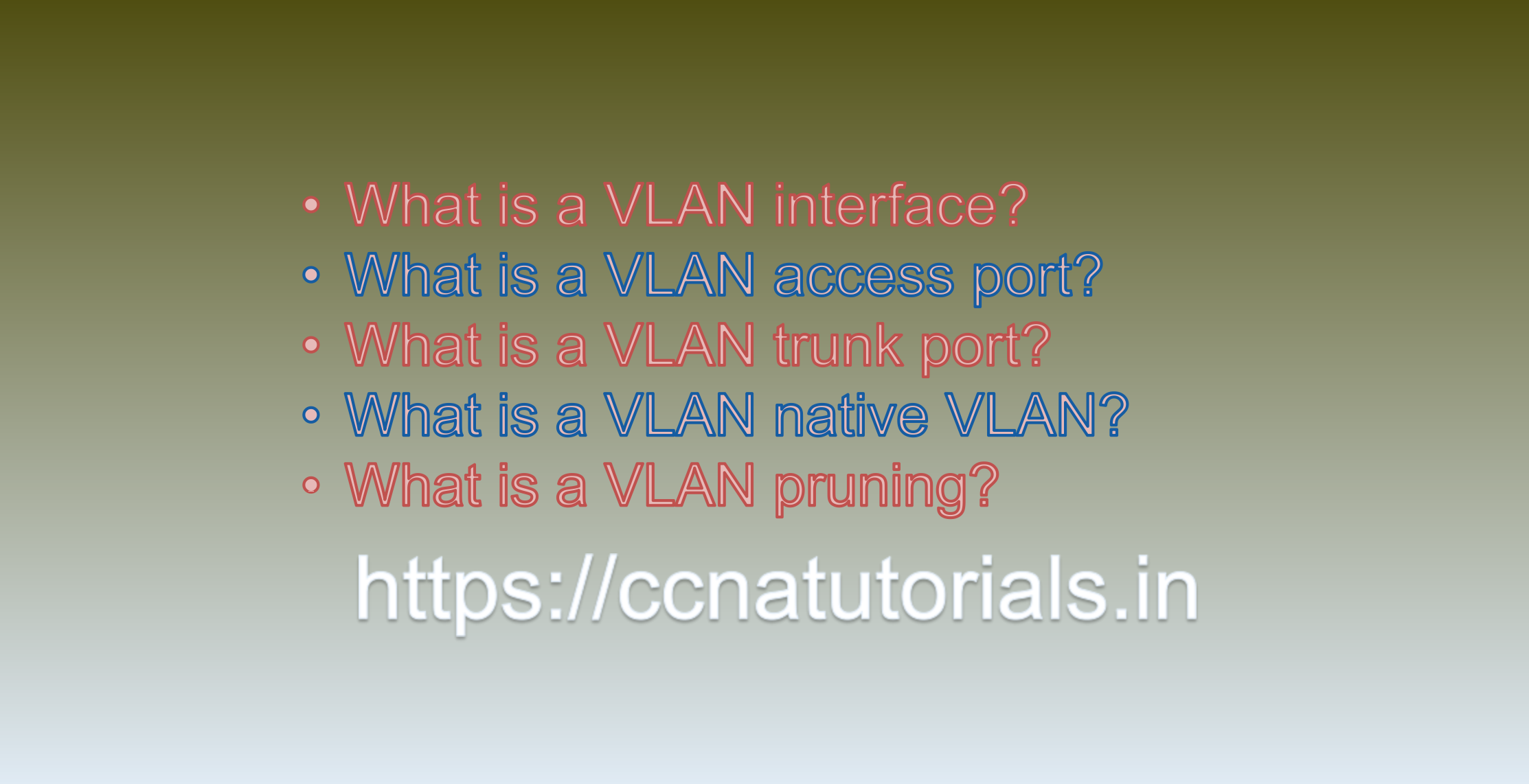Contents of this article
In this article, I describe some CCNA sample questions for practice before appearing in the CCNA 200-301 exam. The following questions are basic questions and related to the CCNA sample questions set 25. There are multiple sample questions set on this website for prior practice online. All questions are described with relevant answers. You can take the following questions and answer as reference for CCNA 200-301 exam. You may also need to do more practice with other websites and books to practice the CCNA sample questions set 25.
Question 1. What is a VLAN interface?
A VLAN interface is a logical interface associated with a specific VLAN. It is created on a router or a layer 3 switch to allow communication between different VLANs. VLAN interfaces are used to route traffic between VLANs, and they can be configured with an IP address so that devices on the VLAN can communicate with devices on other VLANs or with devices on the internet. VLAN interfaces are also known as SVIs (Switch Virtual Interfaces) in Cisco terminology. This is the answer to question 1 of CCNA sample questions set 25.
Question 2. What is a VLAN access port?
A VLAN access port, also known as an untagged port, is a network port on a switch that is assigned to a specific VLAN. When a device is connected to an access port, the traffic is automatically assigned to the VLAN that is configured for that port. The traffic that is sent and received on an access port is untagged, meaning that it does not have a VLAN tag added to it. Access ports are typically used for end devices like computers, servers, and printers, that do not have the capability to add VLAN tags to their traffic. This is the answer to question 2 of CCNA sample questions set 25.
Question 3. What is a VLAN trunk port?
A VLAN trunk port is a network port that is configured to carry traffic for multiple VLANs. The trunk port adds a VLAN tag to each frame to identify the VLAN to which the frame belongs. The VLAN tag contains a VLAN ID that is used by the receiving end to identify the VLAN. The purpose of VLAN trunking is to allow multiple VLANs to be carried over a single physical link between network devices, such as switches or routers. This allows for more efficient use of network resources and simplifies network management. VLAN trunking is commonly used in large enterprise networks to segment traffic and improve network performance and security. This is the answer to question 3 of CCNA sample questions set 4.

Question 4. What is a VLAN native VLAN?
A VLAN native VLAN is a VLAN that carries untagged traffic. It is also known as the default VLAN, as it is the VLAN that untagged traffic will belong to if it is not explicitly tagged with a VLAN ID. When a switch receives untagged traffic on a trunk port, it will place that traffic in the native VLAN. The native VLAN can be configured on a per-port basis or globally for the entire switch. It is important to configure the native VLAN consistently across all devices in a network to prevent potential security issues, such as VLAN hopping. This is the answer to question 4 of CCNA sample questions set 25.
Question 5. What is a VLAN pruning?
VLAN pruning is a feature that helps to prevent unnecessary broadcast traffic from being forwarded over trunk links. It is typically used in a switch network with many VLANs, where broadcast frames from one VLAN can be unnecessarily forwarded to another VLAN. VLAN pruning works by selectively allowing specific VLANs to traverse a trunk link, while suppressing others. By using VLAN pruning, the amount of unnecessary broadcast traffic is reduced, leading to more efficient use of network resources and better network performance. This is the answer to question 5 of CCNA sample questions set 25.
Conclusion for CCNA sample questions set 25
In this article, I described 5 questions with answers related to CCNA 200-301 exam. I hope you found these questions helpful for the practice of the CCNA 200-301 exam. You may drop a comment below or contact us for any queries related to the above questions and answers for CCNA 200-301. Share the above questions If you found them useful. Happy reading!!






